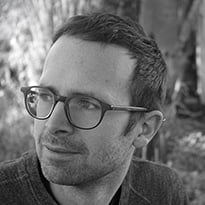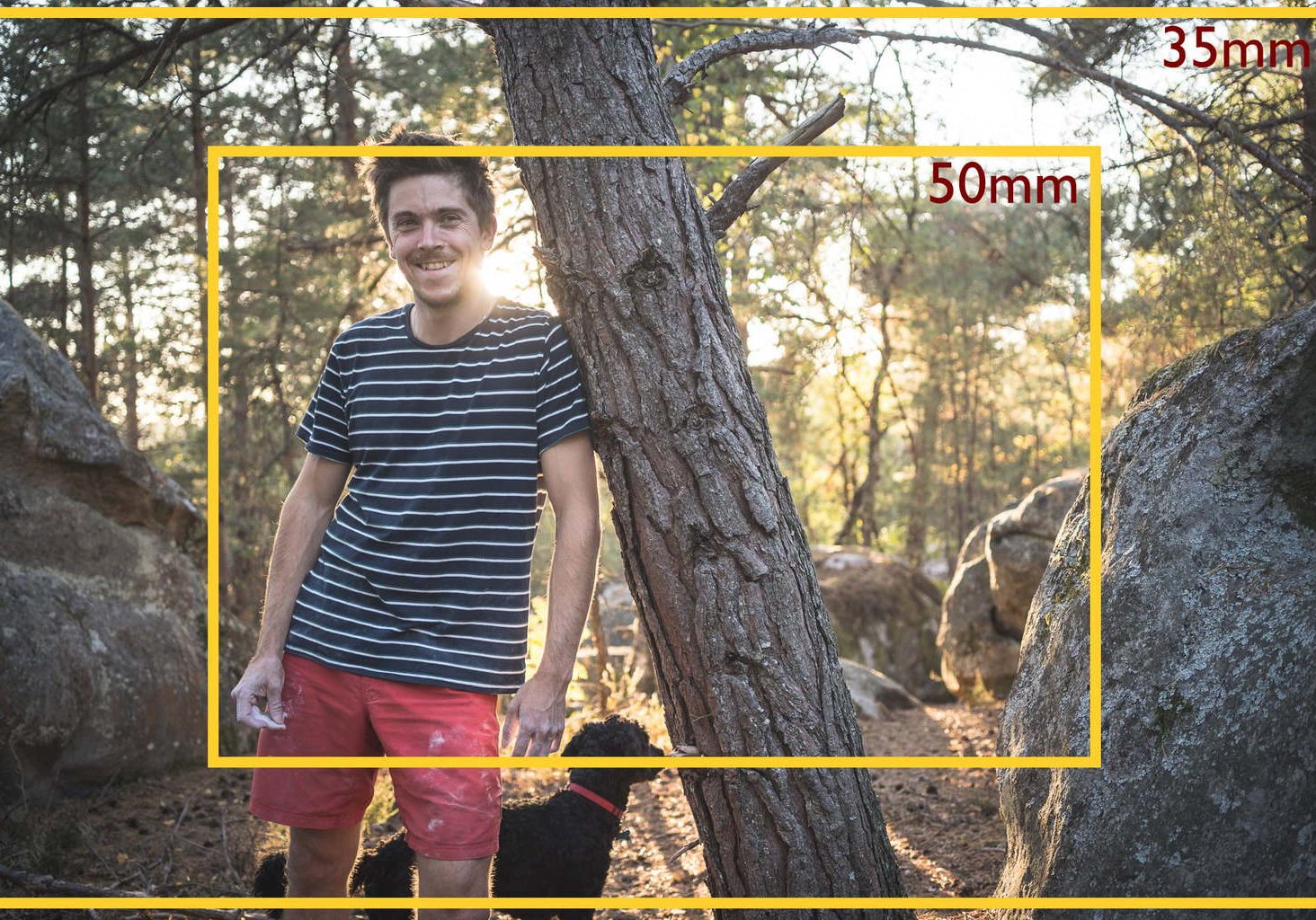
35mm vs 50mm (Which Lens Focal Length is Better?)
Deciding between a 35mm and 50mm lens? Find out the pros & cons of each so you can work out the best focal length for you!
Learn | Photography Guides | By Andy Day
If you’re pondering whether to buy a 35mm or 50mm prime lens, the chances are that you’re about to upgrade from your kit lens and you’re now trying to figure out which focal length is the better fit for you.
Or you might be an experienced user of a zoom lens or two and you’re now wondering what’s so exciting about a prime lens and which one would be worth investigating first.
Both the 35mm and 50mm are classic lengths, offering great versatility. And while they’re fairly close to each other in terms of focal length (you won’t find many primes lenses that fall in between!), they tend to be suited to slightly different jobs, and can give a very different feel.
Lots of these areas overlap — both are great for shooting people, for example — but there are advantages and disadvantages to both. It might be that you end up deciding to buy a 35mm and a 50mm, and fortunately there are some very affordable options that will keep the price down.
Hopefully by the end of this article, you’ll know which lens — or lenses — will best suit your photography.
Table of Contents
Advantages of a 35mm (vs 50mm) Lens
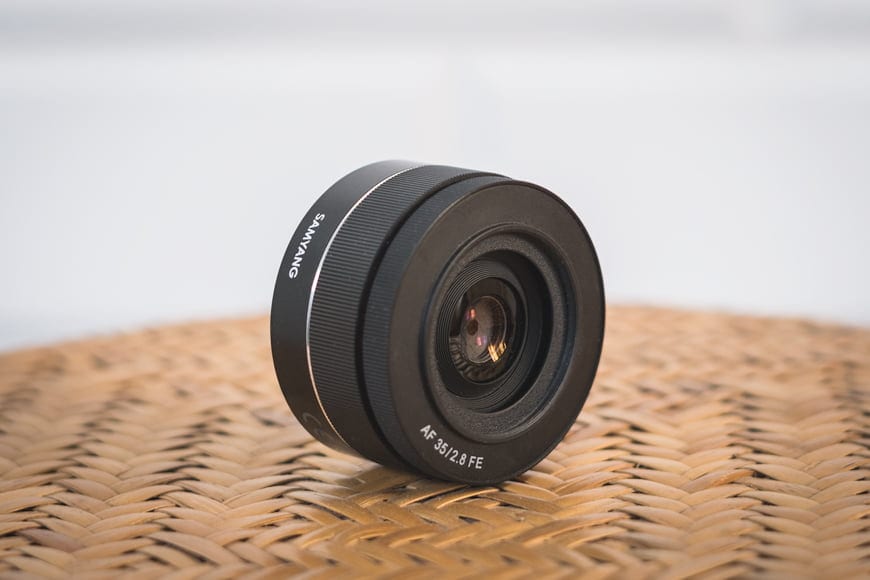
Arguably a shade more versatile than the 50mm, the 35mm prime is a classic walkaround lens that can adapt to a wide range of shooting situations.
(See also: What are the benefits of a prime lens?)
When considering the 35mm vs 50mm, here are some advantages of the former:
1. Wider field of view

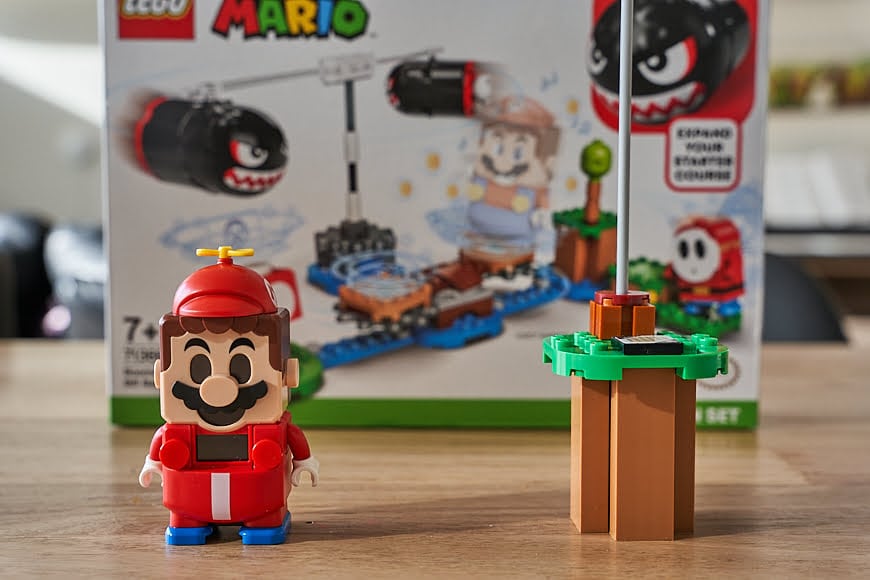
While a 50mm prime lens will give you a field of view of just under 40 degrees, the 35mm prime lens gives you 54.4 degrees — significantly wider.
In short, you’ll simply fit more of the world into each photograph, making it generally a better choice for landscapes, architecture, travel photography, and groups of people.
A wider lens will be more useful in tight spaces, especially indoors where you often can’t move backwards in order to squeeze more into your frame – ideal for event photography, for example.
If you happen to have small, unpredictable, fast-moving subjects — small children being an excellent example! — the 35mm lens will almost certainly be a better bet. We tend to stay quite close to our toddlers when we’re photographing them, and having the wider field of view will give you a much greater chance of keeping them within the frame. In this case, the 35mm wins the 50mm vs 35mm contest.
This focal length is also ideal for group shots and is often the lens of choice for shooting environmental portraits — i.e., photographs of people where you want to present them in a context that gives an insight into who they are.
If you’re on holiday and want to capture the full breadth of a mountaintop vista, a 50mm lens will feel a bit claustrophobic. Big landscapes typically demand wide angles, and 35mm is a much better choice.
2. Greater depth of field

The wider the lens, the greater the depth of field, and the more of your image is going to be in focus.
For this reason, the 35mm lens gives you a greater chance of capturing a sharp subject, which can sometimes be a challenge if they’re moving quickly or unpredictably. If you plan on being close to your subject, it’s simply going to give you far more keepers.
This makes the 35mm lens a better choice for candid moments, such as street photography or capturing children as they play.
It also lends itself well to general day-to-day shots, giving you a versatile point-and-shoot experience where you just want to capture the moment and not worry too much about whether your shot is going to be in focus.
3. Not too much distortion
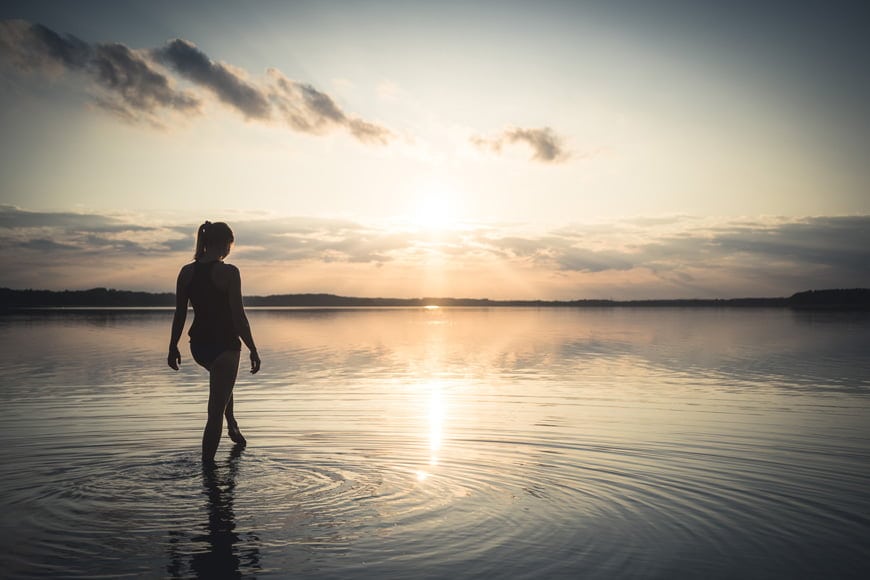
There are wider angle prime lenses than the 35mm, and you’ll find plenty of options from 28mm, 24mm, all the way down to fish-eye.
However, one of the advantages of 35mm lenses is that they have a natural feel to their width as they don’t introduce much distortion. As such, people’s limbs won’t get stretched unnaturally if they stray too close to the edge of the frame. (See: what is distortion in lenses?)
This is part of why some photographers regard 35mm as being close to our own vision — though others will argue the same for the 50mm focal length!
It gains a broad view of what’s around us without making it feel divorced from what we see naturally. For this reason, 35mm is used extensively by photojournalists and street photographers.
In this criteria of the 35mm lens vs 50mm lens, 35 mm trumps the competition.
4. More flexibility
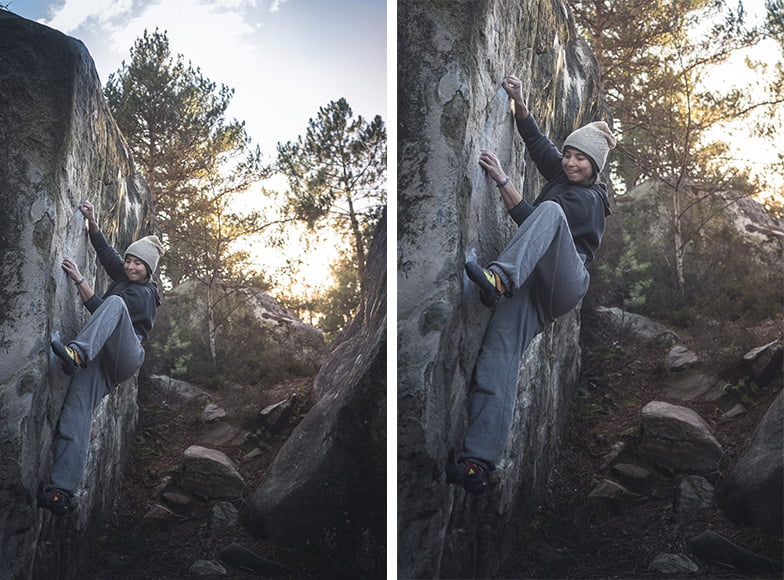
Being wide might make an image confusing because it takes in so much of a scene, but if you decide later that there are too many distracting elements in your photograph, you can simply crop some of them out.
This is one of the advantages of shooting with a wide-angle lens; you might not be able to enlarge your subject without actually physically getting closer, but you can always crop your image later and make your subject fill more of the frame.
Advantages of a 50mm Lens
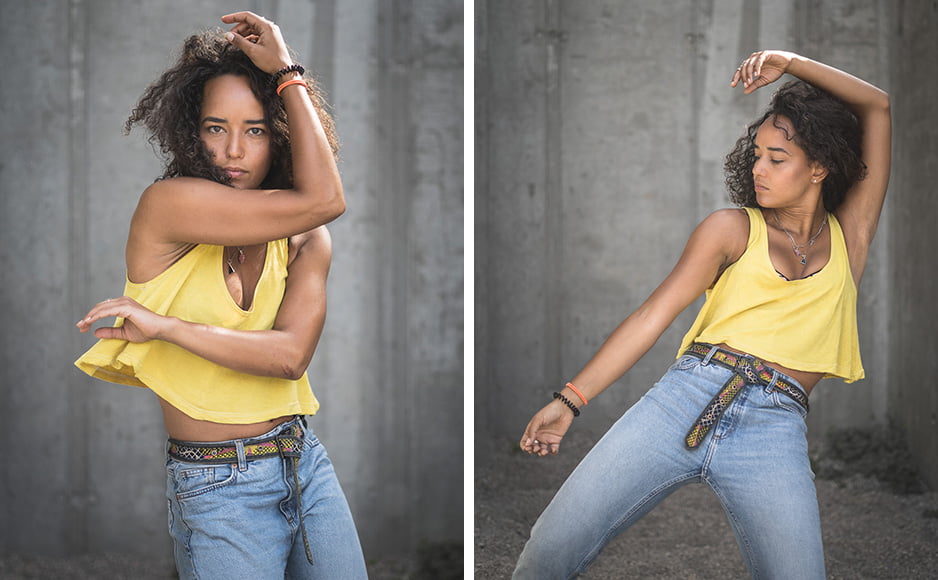
If you want to be more involved with how you craft your images, 50mm is the way to go, bringing a cinematic feel to your photographs.
1. Bring your subject closer
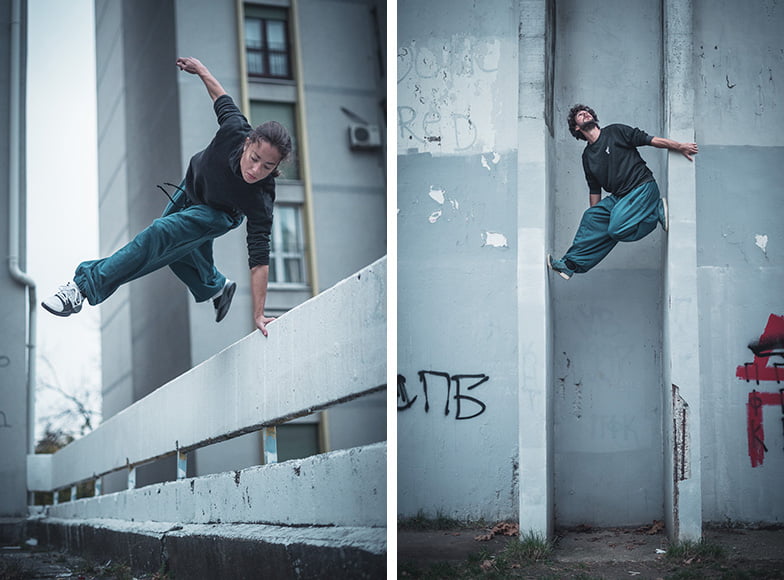
While the 35mm focal length keeps the world at a slight distance because of how wide it is, the ‘nifty fifty’ brings life that little bit closer.
There will be occasions where you can’t zoom, or where a wider field of view just presents too much clutter. 50mm gives you a narrower frame to really bring your subject into your photograph.
In this category of the 35mm vs 50mm lens, the 50 mm is the winner.
2. How we see the world
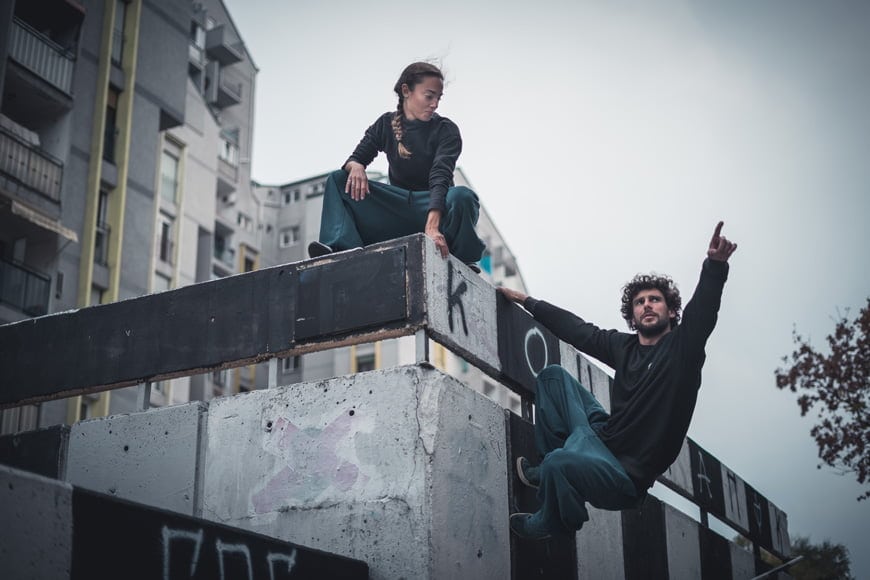
For many, 50mm relates very closely with how we see the world, both in terms of our ability to filter out what’s in our peripheral vision and in how we understand perspective.
Wide-angle lenses tend to introduce distortion, stretching people’s features and potentially making elements at the edge of the frame fatter than they are in reality.
The 50mm moves away from this, making it a more flattering focal length for portraits as it doesn’t make arms too noodly or noses too pointy. (Best not to go closer than waist-length, however — try 85mm and longer if you want to be even tighter.)
3. Isolate your subject
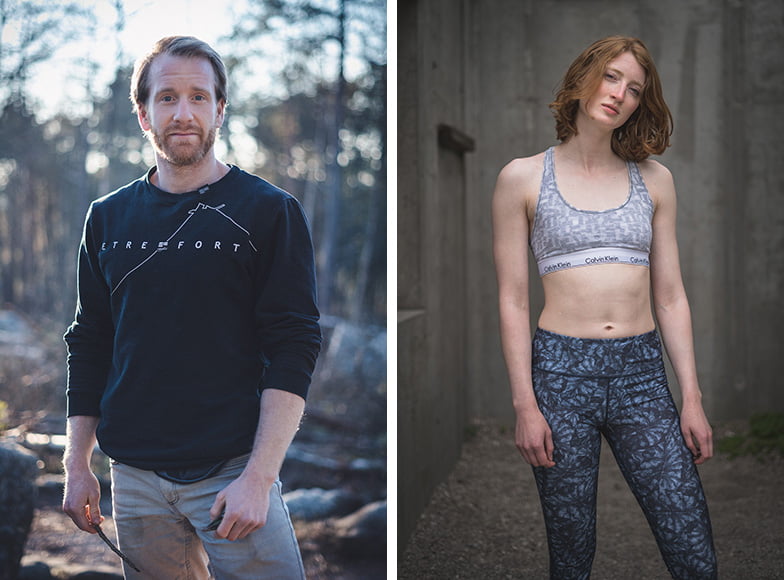
While the 35mm will often grab everything and keep it all relatively sharp, a 50mm lens shooting at its widest aperture (usually f/1.8 — or even wider if you have money to spend!) will create a beautiful separation between your subject and its surroundings.
This is perfect for portraits as it means that the person can be isolated from the background, naturally leading the viewer’s eye to the most important part of your photograph.
This shallow depth of field (tutorial) also gives your images a more cinematic look, creating soft, out-of-focus areas that feel like they’re straight off the silver screen.
On top of that, a wide aperture helps in low light situations.
If you want to make people look like Hollywood heroes, a 50mm lens and a wide aperture is the best place to start.
4. More control, greater creativity
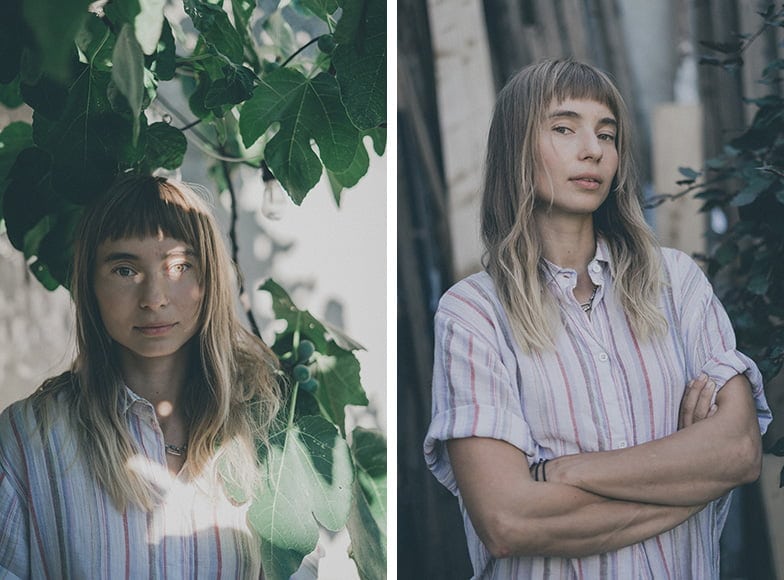
A lens that offers a narrower field of view means that you’re much more involved with the creative process.
You are filtering out what’s not in your frame, making more decisions about what to include, and also having much greater control over which aspects of the image will be in focus.
You could argue that while 35mm primes are for reacting, 50mm primes are for crafting.
Recommended 35mm and 50mm Lenses
As both 50mm and 35mm prime lenses are a popular choice, buyers are blessed with a wide variety of options across a range of prices.
Compared to ten years ago, you’ll be hard pushed to make a poor choice according to your budget, but these are our recommendations.
Canon
- Canon RF 35mm f/1.8 IS Macro STM – There aren’t many affordable lenses in the RF system, but this 35mm lens for Canon is rather impressive for its price point.
- Sigma 35mm f/1.4 DG HSM Art Lens for Canon EF – This might seem expensive but Sigma gives you a lot of lens for the money, and there are few other options available. Fortunately, the Sigma 35mm f/1.4 DG HSM Art is an excellent lump of a lens that gives beautiful results.
- EF 50mm f/1.8 STM – Don’t be fooled by the low price: this is the nifty fifty of choice for countless high-end professionals over the years. Sharp, fast, and incredibly lightweight.
- RF 50mm f/1.2 – This Canon 50mm for full-frame mirrorless cameras sets the bar high. It’s big, heavy, and expensive, and will deliver razor-sharp images with a stunning amount of bokeh.
Nikon
- Tamron SP 35mm f/1.4 Di USD Lens for Nikon F – Tamron has built a phenomenal reputation in recent years, and one of the first lenses that really impressed was this 35mm beast for Nikon.
- Nikon NIKKOR Z 35mm f/1.8 S – Not the fastest 35mm lens, but definitely one of the sharpest available for the Nikon system, this lens gives crisp images and produces very little distortion.
- Nikon AF-S NIKKOR 50mm f/1.8G – More rugged and with greater autofocus compatibility than its f/1.8D counterpart, this is a solid choice for Nikon shooters.
- Nikon NIKKOR Z 50mm f/1.8 S – Despite being a new lens for its Z-mount range of cameras, the Z 50mm f/1.8 S is still very affordable, probably because it’s not quite as fast as its f/1.4 and f/1.2 counterparts. However, great build quality and fantastic sharpness make this a lens to be reckoned with.
Fujifilm
- Viltrox AF 23mm f/1.4 XF Lens V2 for FUJIFILM X-Mount – Viltrox has only just started making lenses for Fujifilm cameras and this 23mm lens (full-frame equivalent of 35mm) has taken many by surprise. It’s insanely fast for this price point and reviews have been positive.
- Fujinon XF 23mm f/1.4 R – You’ll be hard pushed to find a Fujifilm shooter who doesn’t leave this 23mm lens (full-frame equivalent of 35mm) on their camera for the vast majority of the time.
- Fujifilm XF 35mm f/2 R WR – Offering a full-frame equivalent of 56mm, the Fujifilm XF 35mm f/2 R WR is about as small as it gets when it comes to nifty fifty lenses. Compact and fast, it’s the walkaround choice of many a Fujifilm fan.
- Fujifilm XF 35mm f/1.4 R – A step up in price means a significant step up in speed. This f/1.4 sucks in a lot of light and delivers gorgeous results.
Sony
- Rokinon/Samyang SYIO45AF-E 45mm f/1.8 – Not quite 50mm but close enough, and my recommendation for Sony shooters on a budget. Expect solid autofocus performance and sharp images.
- Sony SEL50F14Z Planar T FE 50mm f/1.4 ZA – Outstanding sharpness from corner to corner, the Planar T FE 50mm f/1.4 ZA is a lens that delivers stunning results.
35mm vs 50mm on Crop Sensor Cameras
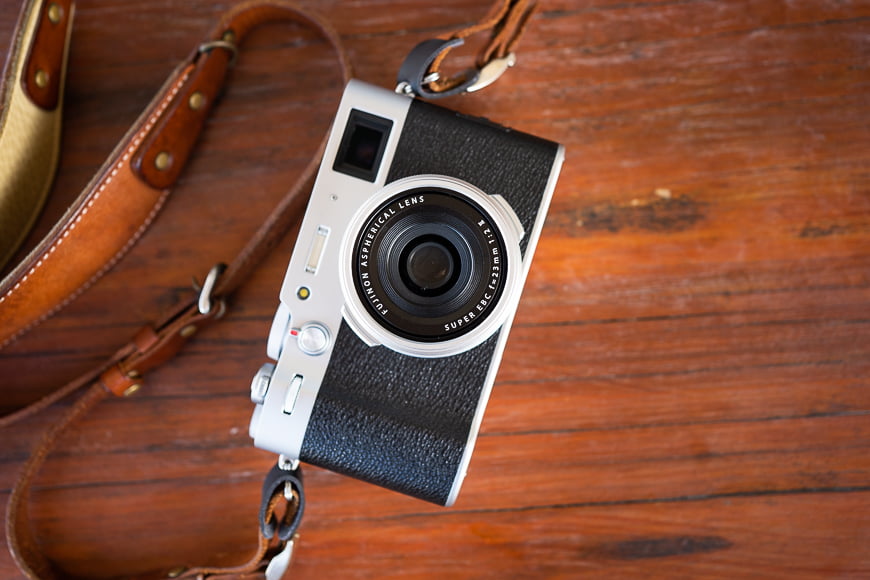
Caption: This crop sensor camera has a 23mm lens, equivalent to a 35mm field of view.
If you have an APS-C or crop sensor camera, you’ll need to do a bit of maths to figure out the equivalent focal length. For example, a 50mm lens attached to an APS-C camera gives a much more zoomed-in view — equivalent to around 80mm — compared to when it’s attached to a full-frame camera.
For this reason, if you’re pondering the equivalent of a 35mm prime lens for your system, you’ll need to choose something that’s closer to 23mm or 24mm.
If you’re looking at the equivalent of a 50mm prime lens for your APS-C camera, you’ll need to choose something that’s closer to 35mm.
Here are our recommendations for Sony, Nikon, and Canon crop sensor cameras.
- Canon EF-S 24mm f/2.8 STM – While not quite as fast as many of its full-frame counterparts, this lens more than makes up for it by being the smallest one the brand has available. As walkaround lenses go, this is probably the closest you’ll get to perfection and it’s so tiny that you might forget that you even have a lens attached.
- Canon 30mm F1.4 DC DN | C for EF-M Mount – Canon’s M-series cameras don’t have a huge range of lenses but this lens offers excellent quality and performance.
- Nikon NIKKOR 35mm f/1.8G AF-S DX – Affordable, sharp, and relatively fast, this lens offers solid performance in a compact format.
- Sony SEL-20F28 E-Mount 20mm f/2.8 – More like a lens cap than a lens, this wonderfully low-profile prime turns your APS-C Sony camera into a point and shoot.
- Sony 35mm f/1.8 OSS – Not only is it sharp and fast, Sony opted to include optical stabilization (OSS) as well.
Do I Need 35mm and 50mm? Tips to Help You Decide
Now we’ve covered the key points about the 35mm vs 50mm debate. If you’re still pondering which of the two focal lengths is going to best suit your photography, you might want to dig through your existing photographs and see what you’ve been shooting most.
Lightroom gives you the option to filter your entire catalogue according to the focal length at which each image was shot, so that might be one place to start.
Another option might be to take your kit lens and lock if off at 35mm (or the APS-C equivalent of 24mm) and try shooting for a week. Then lock it off at 50mm (or the APS-C equivalent of 35mm) and see how that goes.
Once you’ve grown accustomed to being tied to each of these focal lengths for a week at a time, you might then be in a better position to make a decision.
Alternatively, you may wish to splash out on one of each. If you have small children but also want to try your hand at more considered portraits, you may well need both the 35mm lens and the 50mm lens.
35mm vs 50mm FAQs
Is 35mm or 50mm better for portraits?
Both are great portrait lenses, however, a 50mm will generally give you more depth of field (thus offering better subject separation), show less distortion, and still have a wide enough field of view to capture enough of the surrounding context. That is why 50mm film photography is so popular.
Why is 35mm so popular?
35mm is popular because it’s a highly versatile focal length and offers a field of view that’s regarded as being close to what the human eye perceives.
Do you need both 35mm and 50mm?
Each has its own advantages. That said, having both in your kit is certainly not a requirement. Sometimes, constraints in focal length can even be good for creativity. Consider what types of images you’ll be shooting and decide whether you really need (and can afford) both – each photographer’s situation is different.
Final Words
So, 35mm or 50mm? As a first step into the world of primes, both are good choices but for different reasons.
Hopefully, you should know whether you need the width of the 35mm or the cinematic feel offered by the 50mm lens; otherwise, you might just have to stretch to owning one of each!
If you have any questions or need some help with the decision process, drop us a comment below.











